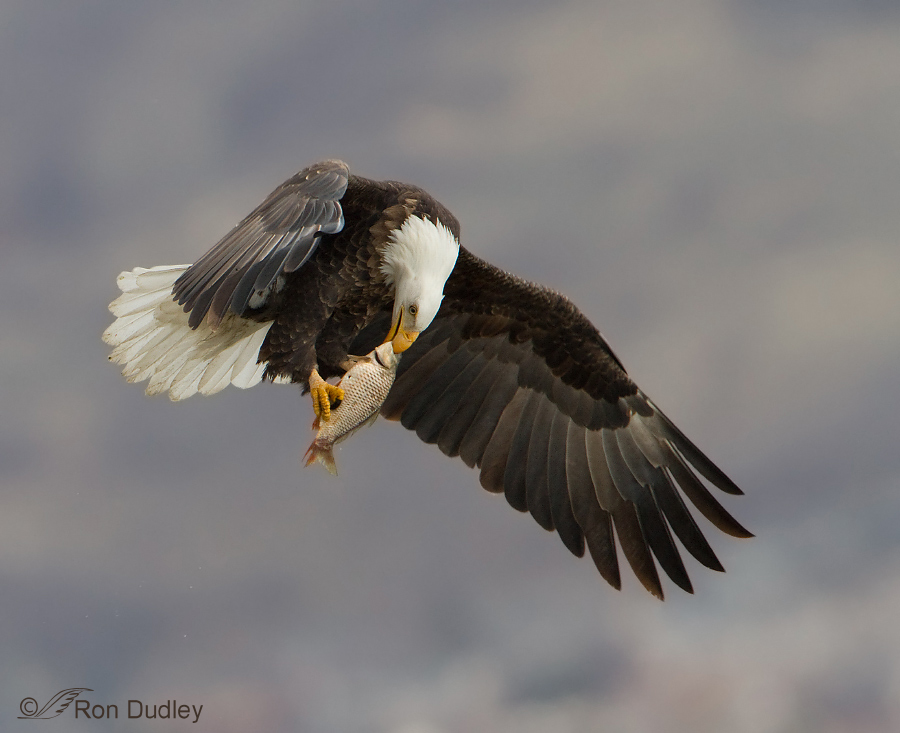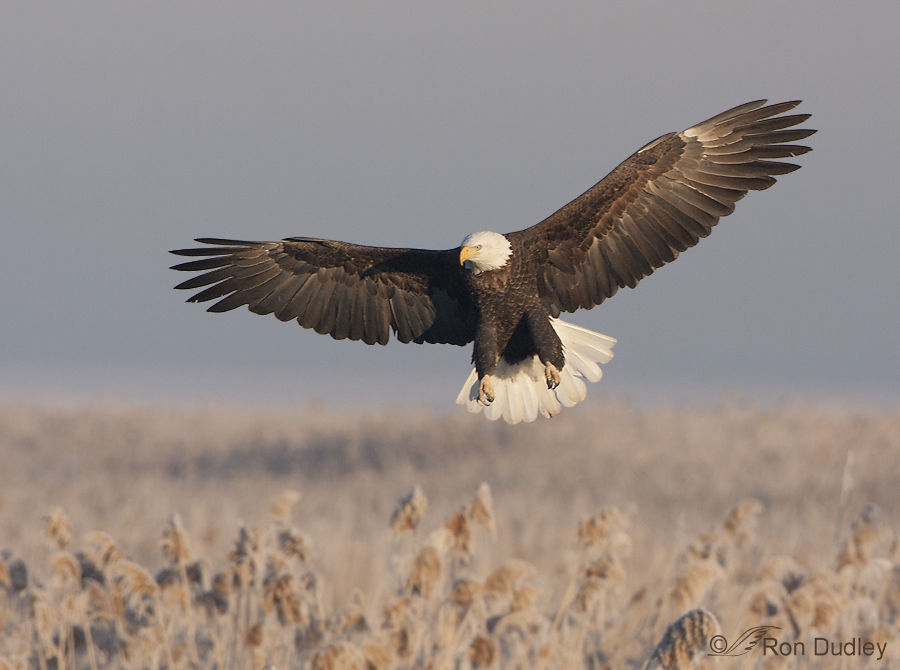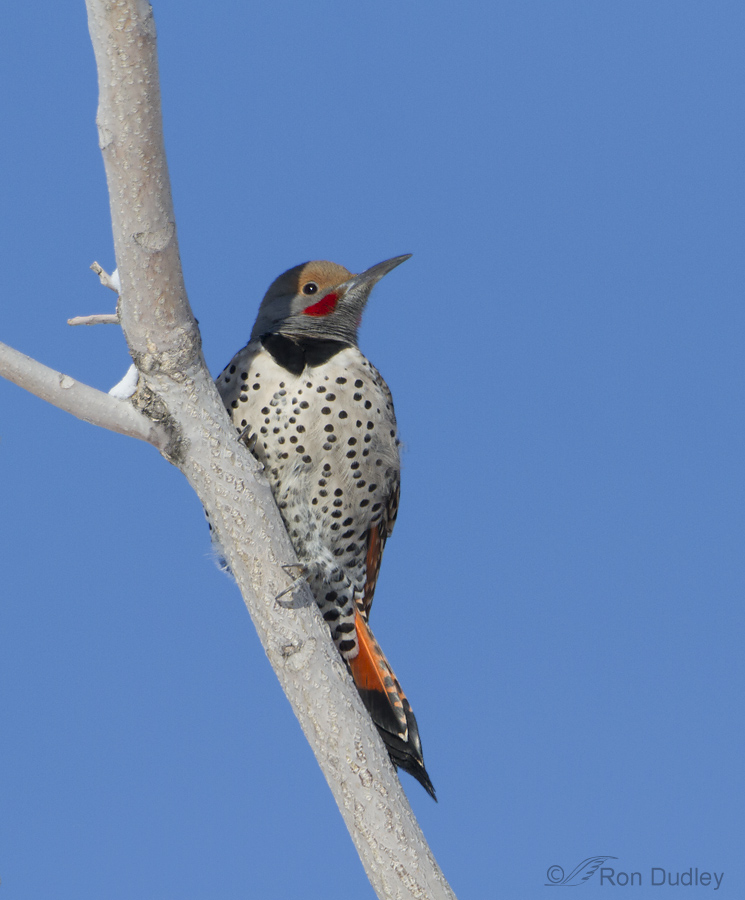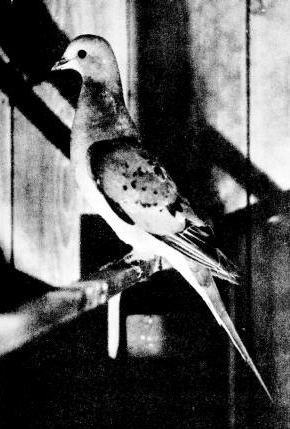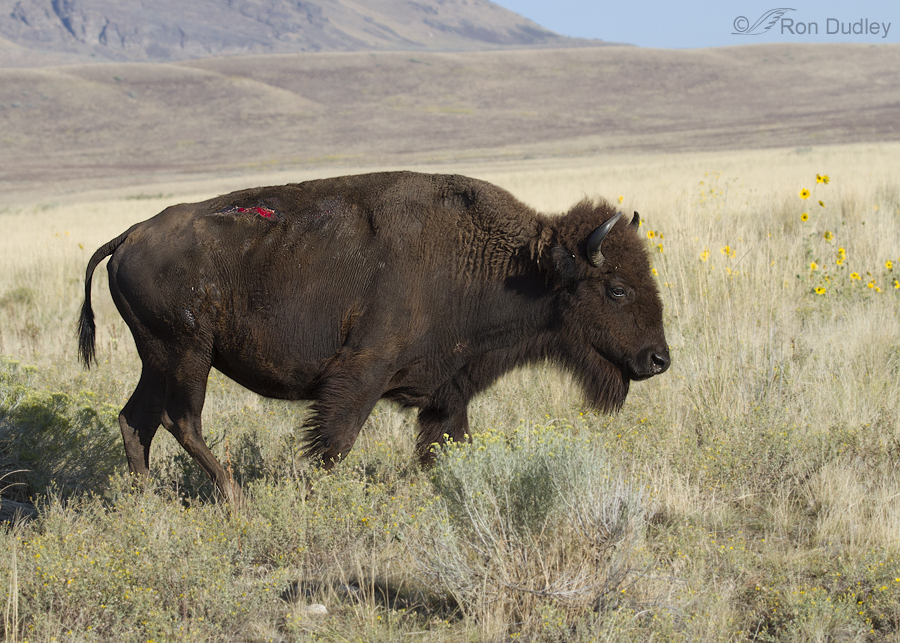Category: Ethics
Bald Eagle Flaring For A Landing (+ an update on Utah’s dying eagles)
A Two Woodpecker Day And The Temptations Of The Clone Tool
My Puritan Ancestor and the Passenger Pigeon
A Bison’s Life Isn’t Easy
Burrowing Owl In Dramatic Side Light
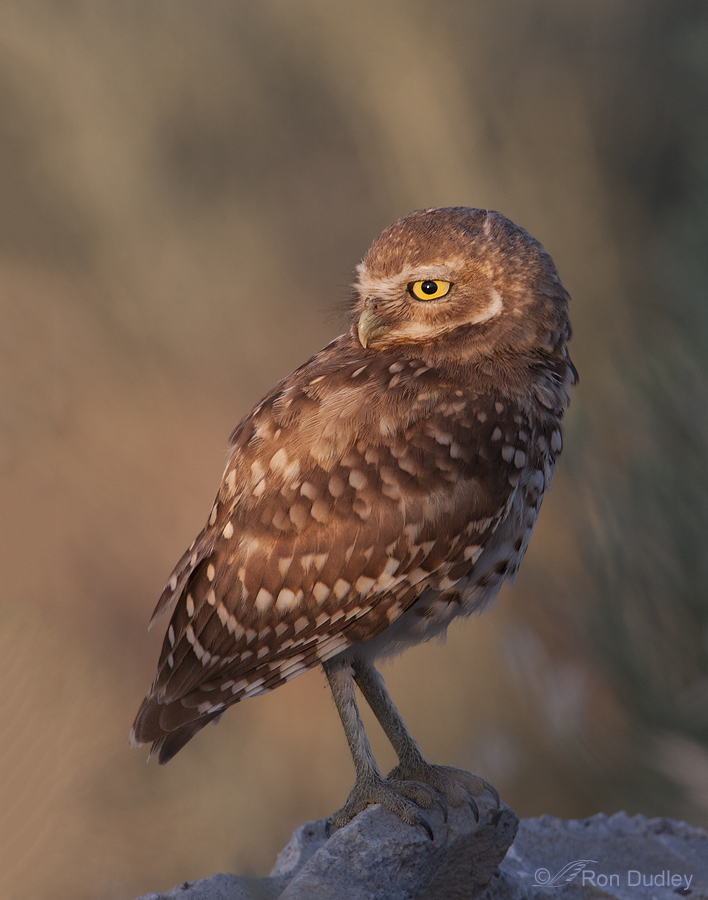
As every photographer knows, light angle can make or break an image. In static portrait shots especially, partial side lighting (at perhaps 45 degrees to your subject) emphasizes texture, patterns and shapes and helps to separate subject from background. It’s been said that side light “sculpts” your subject.
Owl Head-on Flight Shots Don’t Have To Be Baited
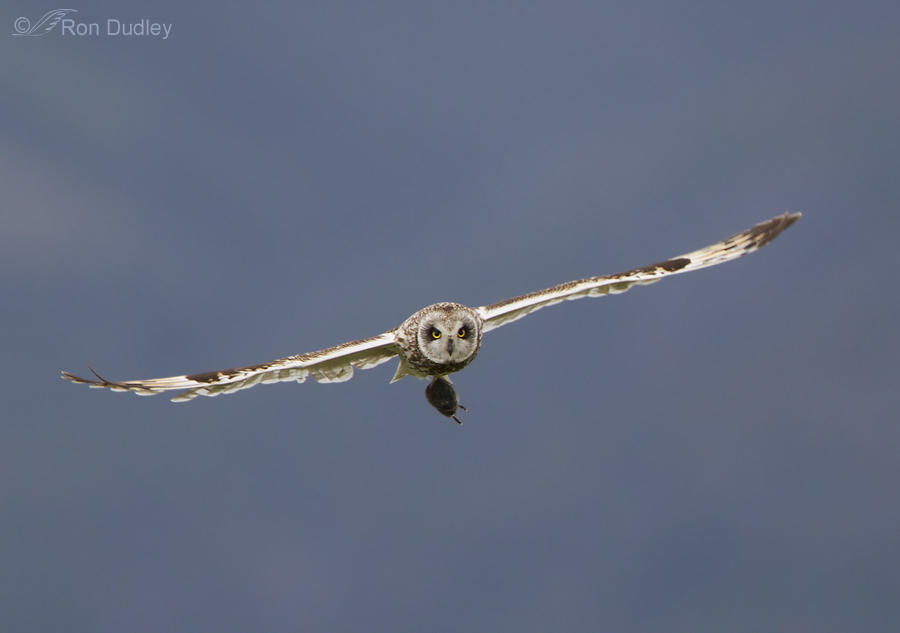
Head-on flight shots of owls have often been baited using live, store-bought mice. I’m of the opinion that baiting raptors is not only unethical (a debate I’d prefer to not get into here) but unnecessary for those kinds of images. However they typically require patience, intimate knowledge of the subject, a keen eye for interpreting behavior and even a little luck.
Yet Another Reason Why I Dislike Baiting
Baiting birds into close proximity for photographic purposes is a highly controversial subject, especially when it’s done to raptors. Often live bait such as store-bought mice are thrown in front of the photographer so that photos can be obtained of the bird in flight as it swoops down for the rodent.
Promised Update On Mergansers Entangled In Fishing Line
Some of you may remember that on February 17th I posted about the problem of birds getting caught in discarded fishing line at Willow Pond, one of our urban fisheries here in Murray, Utah. I had photographed some Common Mergansers that had fishing line entangled on their bodies and fish hooks stuck in their bills. This merganser had lost a foot to fishing line. Another had a fish-hook stuck in its bill and other ducks had line wrapped around their legs and wings. Here’s a link to that original post: https://featheredphotography.com/blog/2013/02/17/one-footed-merganser-in-a-hurry/#comment-21517 In comments, many of you were as disturbed as I was about the carelessness of anglers and the resulting suffering of birds and some suggested a variety of methods to help address the issue. I chose to contact Tom Wharton, a long-time and highly respected columnist for the Salt Lake Tribune, to see if he was interested in doing a story on the situation at Willow Pond. When I sent him a link to the merganser post he responded almost immediately and asked if I would meet him at the pond and give him some background. So a couple of days later Mia and I met him at the pond and spent most of an hour with him reviewing the situation. He was enthusiastic about writing a column on the subject and trying to help birds. That column was published three days ago but I’ve been on a camping/photo trip and couldn’t post about it until now. But since many of you had asked me to update any developments…
Image Thieves Prompt A Change To “Feathered Photography”
I’m sorry to say that rampant copyright infringement and outright image thievery have forced me to make an unwanted change to my blog.
One-footed Merganser In A Hurry
I live near a local fishing pond that attracts a few fish-eating birds, particularly in the late winter and early spring. For the last few days there’s been a pair of Common Mergansers on the pond and yesterday morning I was finally able to get relatively close to them for a few minutes. The pond was still about half covered with ice but it’s melting fast. 1/2500, f/7.1, ISO 500, 500 f/4, 1.4 tc, natural light Most of the time there wasn’t much action with the cormorants but once, when this bird apparently thought its companion might have caught a fish, it rushed over to investigate. It wasn’t until this morning when I began culling and processing the images that I noticed that it was missing its left foot. 1/2500, f/7.1, ISO 500, 500 f/4, 1.4 tc, natural light Since they use their webbed feet to help propel them along the surface of the water this bird could really scoot for having only one foot. 1/2500, f/7.1, ISO 500, 500 f/4, 1.4 tc, natural light This image shows the missing foot best. 1/2000, f/7.1, ISO 500, 500 f/4, 1.4 tc, natural light This shot, and the next two, are of the other merganser. As you can see it had some kind of fishing lure/hook stuck in its lower mandible. It doesn’t look like a typical lure so perhaps it’s what’s left of a fish that it had tried to swallow when the hook and/or line got stuck in its bill. 1/2000, f/7.1, ISO 500, 500…
It’s Been A Tough Winter For Birds (and it’s getting worse)
Typical winters are hard on birds in northern Utah (and elsewhere). But when the season is unusually frigid with lots of snow as we’re having this year they struggle even more to survive. All of these images have been taken since January 2 of this year. Upland game birds like this Chukar seem to have adapted to extreme conditions fairly well. This bird was all puffed up and sitting high on a rock to catch the earliest warming rays of the sun as it rose over the nearby Wasatch Mountains. Another upland game species that can apparently take harsh conditions quite well is the Ring-necked Pheasant (this is a female). They seem to forage for seeds at the base of plants where the snow isn’t as thick and their food is more readily available. But many other species have a difficult time and quite a few birds don’t survive until spring. The waterfowl that winter over here congregate in the few areas of open water where the flowing water is the last to freeze over. But when it gets very cold, even those small bits of open water freeze. I’ve seen ducks and coots frozen into the ice, some of them still alive. This female Green-winged Teal has just left one of the last unfrozen patches of water and is approaching an area of frost flowers. This Northern Flicker is using the protection of the underside of the eaves of a building on Antelope Island State Park. I thought the angled…
Image Theft And Identity Theft In One Fell Swoop
On January 4th I published a blog post regarding this image that had been stolen from my Feathered Photography galleries. My copyright had been removed and replaced with the logo of someone else and the image was posted on Facebook under the name of Alessandro Pinna (I’m appalled at the poor quality of this version due to overcompression…) As I reported before, I filed a DMCA takedown notice with Facebook and the image was removed the next day. But many other images on that FB account had been stolen and the comment section was brimming with vitriol and extreme anger. Justifiably so. It turns out that the real Alessandro Pinna has apparently been the victim of identity theft on FB and is innocent in this entire matter. Yesterday, he posted this police report on his website. I then posted the link to the police report on a FB group I belong to that is dedicated to dealing with image theft. At that time I was yet unsure about what was really going on. Then today, I received the following email from the real Alessandro Pinna (quoted with permission). He had seen both my blog post and the fact that I had posted the police report to the FB group. Dear Ron, I am writing to you because I just found out you guys are mentioning my name and my website on your blog. I just wanted to confirm it’s my name this guy has stolen and so I had to start the process to defend myself and clear…
Image Thieves Burn My Butt!
Image thievery is a huge issue for me and virtually all other serious photographers who have websites or blogs. I just don’t understand why some folks think they have the right to steal the images of others. Social media sites like Facebook, Pinterest and tumblr are a big part of the problem (though it certainly exists elsewhere on the web). Each of these sites has policies in their terms of service that prohibit members from infringing on the intellectual property rights of others and allows them to disable the accounts of those who abuse the policy. For example, from the terms of service of Facebook: “If you repeatedly infringe other people’s intellectual property rights, we will disable your account when appropriate.” Social media sites also have online forms that allow legitimate copyright holders to file Digital Millenium Copyright Act (DMCA) take-down notices with those respective sites. Sadly, I’m coming to know these procedures well and some of those accounts have been disabled permanently because of repeated abuse. Below is just one example of how flagrant and egregious these violations can be. This image of a male American Kestrel is in my Feathered Photography image galleries (link to the photo). Every page and photo in those galleries contains this statement: “All images are the property of Ron Dudley and are protected under international copyright laws“. But last week I was alerted by someone who recognized my image on the Facebook page of someone else. Notice that my copyright has been removed and replaced by the logo of Alessandro Pinna. …
Female Kestrel With Jesses, In Flight
Yesterday morning we found the female American Kestrel with attached jesses once again. This time we were able to get a little closer to her than we had before. This little lady is more difficult to approach than most other kestrels on the island. 1/4000, f/5.6, ISO 800, 500 f/4, 1.4 tc, natural light I think she looks and acts healthy. She’s actively hunting and based on the blood on her jesses (most likely from voles) I’d guess that she’s good at it. I immediately called Becka Butcher, the trapper who has been trying to capture this bird so that the jesses can be removed. Becka made another attempt later in the afternoon but she was unsuccessful. This bird is extremely wary. The kestrel approached the trap, even flew down and investigated it closely but would not enter it. Becka said that she and others who are qualified and licensed will continue to try to capture this bird using more “creative methods”, since traditional traps don’t seem to work on her (a number of attempts have been made). And since she most likely escaped from a rogue, “wannabe” illegal falconer (rather than from an ethical, licensed falconer), once this falcon has been trapped and checked for health issues she will be released back into the wild. A good thing… Ron
Bald Eagle Flaring For A Landing (+ an update on Utah’s dying eagles)
A Two Woodpecker Day And The Temptations Of The Clone Tool
My Puritan Ancestor and the Passenger Pigeon
A Bison’s Life Isn’t Easy
Burrowing Owl In Dramatic Side Light

As every photographer knows, light angle can make or break an image. In static portrait shots especially, partial side lighting (at perhaps 45 degrees to your subject) emphasizes texture, patterns and shapes and helps to separate subject from background. It’s been said that side light “sculpts” your subject.
Owl Head-on Flight Shots Don’t Have To Be Baited

Head-on flight shots of owls have often been baited using live, store-bought mice. I’m of the opinion that baiting raptors is not only unethical (a debate I’d prefer to not get into here) but unnecessary for those kinds of images. However they typically require patience, intimate knowledge of the subject, a keen eye for interpreting behavior and even a little luck.
Yet Another Reason Why I Dislike Baiting
Baiting birds into close proximity for photographic purposes is a highly controversial subject, especially when it’s done to raptors. Often live bait such as store-bought mice are thrown in front of the photographer so that photos can be obtained of the bird in flight as it swoops down for the rodent.
Promised Update On Mergansers Entangled In Fishing Line
Some of you may remember that on February 17th I posted about the problem of birds getting caught in discarded fishing line at Willow Pond, one of our urban fisheries here in Murray, Utah. I had photographed some Common Mergansers that had fishing line entangled on their bodies and fish hooks stuck in their bills. This merganser had lost a foot to fishing line. Another had a fish-hook stuck in its bill and other ducks had line wrapped around their legs and wings. Here’s a link to that original post: https://featheredphotography.com/blog/2013/02/17/one-footed-merganser-in-a-hurry/#comment-21517 In comments, many of you were as disturbed as I was about the carelessness of anglers and the resulting suffering of birds and some suggested a variety of methods to help address the issue. I chose to contact Tom Wharton, a long-time and highly respected columnist for the Salt Lake Tribune, to see if he was interested in doing a story on the situation at Willow Pond. When I sent him a link to the merganser post he responded almost immediately and asked if I would meet him at the pond and give him some background. So a couple of days later Mia and I met him at the pond and spent most of an hour with him reviewing the situation. He was enthusiastic about writing a column on the subject and trying to help birds. That column was published three days ago but I’ve been on a camping/photo trip and couldn’t post about it until now. But since many of you had asked me to update any developments…
Image Thieves Prompt A Change To “Feathered Photography”
I’m sorry to say that rampant copyright infringement and outright image thievery have forced me to make an unwanted change to my blog.
One-footed Merganser In A Hurry
I live near a local fishing pond that attracts a few fish-eating birds, particularly in the late winter and early spring. For the last few days there’s been a pair of Common Mergansers on the pond and yesterday morning I was finally able to get relatively close to them for a few minutes. The pond was still about half covered with ice but it’s melting fast. 1/2500, f/7.1, ISO 500, 500 f/4, 1.4 tc, natural light Most of the time there wasn’t much action with the cormorants but once, when this bird apparently thought its companion might have caught a fish, it rushed over to investigate. It wasn’t until this morning when I began culling and processing the images that I noticed that it was missing its left foot. 1/2500, f/7.1, ISO 500, 500 f/4, 1.4 tc, natural light Since they use their webbed feet to help propel them along the surface of the water this bird could really scoot for having only one foot. 1/2500, f/7.1, ISO 500, 500 f/4, 1.4 tc, natural light This image shows the missing foot best. 1/2000, f/7.1, ISO 500, 500 f/4, 1.4 tc, natural light This shot, and the next two, are of the other merganser. As you can see it had some kind of fishing lure/hook stuck in its lower mandible. It doesn’t look like a typical lure so perhaps it’s what’s left of a fish that it had tried to swallow when the hook and/or line got stuck in its bill. 1/2000, f/7.1, ISO 500, 500…
It’s Been A Tough Winter For Birds (and it’s getting worse)
Typical winters are hard on birds in northern Utah (and elsewhere). But when the season is unusually frigid with lots of snow as we’re having this year they struggle even more to survive. All of these images have been taken since January 2 of this year. Upland game birds like this Chukar seem to have adapted to extreme conditions fairly well. This bird was all puffed up and sitting high on a rock to catch the earliest warming rays of the sun as it rose over the nearby Wasatch Mountains. Another upland game species that can apparently take harsh conditions quite well is the Ring-necked Pheasant (this is a female). They seem to forage for seeds at the base of plants where the snow isn’t as thick and their food is more readily available. But many other species have a difficult time and quite a few birds don’t survive until spring. The waterfowl that winter over here congregate in the few areas of open water where the flowing water is the last to freeze over. But when it gets very cold, even those small bits of open water freeze. I’ve seen ducks and coots frozen into the ice, some of them still alive. This female Green-winged Teal has just left one of the last unfrozen patches of water and is approaching an area of frost flowers. This Northern Flicker is using the protection of the underside of the eaves of a building on Antelope Island State Park. I thought the angled…
Image Theft And Identity Theft In One Fell Swoop
On January 4th I published a blog post regarding this image that had been stolen from my Feathered Photography galleries. My copyright had been removed and replaced with the logo of someone else and the image was posted on Facebook under the name of Alessandro Pinna (I’m appalled at the poor quality of this version due to overcompression…) As I reported before, I filed a DMCA takedown notice with Facebook and the image was removed the next day. But many other images on that FB account had been stolen and the comment section was brimming with vitriol and extreme anger. Justifiably so. It turns out that the real Alessandro Pinna has apparently been the victim of identity theft on FB and is innocent in this entire matter. Yesterday, he posted this police report on his website. I then posted the link to the police report on a FB group I belong to that is dedicated to dealing with image theft. At that time I was yet unsure about what was really going on. Then today, I received the following email from the real Alessandro Pinna (quoted with permission). He had seen both my blog post and the fact that I had posted the police report to the FB group. Dear Ron, I am writing to you because I just found out you guys are mentioning my name and my website on your blog. I just wanted to confirm it’s my name this guy has stolen and so I had to start the process to defend myself and clear…
Image Thieves Burn My Butt!
Image thievery is a huge issue for me and virtually all other serious photographers who have websites or blogs. I just don’t understand why some folks think they have the right to steal the images of others. Social media sites like Facebook, Pinterest and tumblr are a big part of the problem (though it certainly exists elsewhere on the web). Each of these sites has policies in their terms of service that prohibit members from infringing on the intellectual property rights of others and allows them to disable the accounts of those who abuse the policy. For example, from the terms of service of Facebook: “If you repeatedly infringe other people’s intellectual property rights, we will disable your account when appropriate.” Social media sites also have online forms that allow legitimate copyright holders to file Digital Millenium Copyright Act (DMCA) take-down notices with those respective sites. Sadly, I’m coming to know these procedures well and some of those accounts have been disabled permanently because of repeated abuse. Below is just one example of how flagrant and egregious these violations can be. This image of a male American Kestrel is in my Feathered Photography image galleries (link to the photo). Every page and photo in those galleries contains this statement: “All images are the property of Ron Dudley and are protected under international copyright laws“. But last week I was alerted by someone who recognized my image on the Facebook page of someone else. Notice that my copyright has been removed and replaced by the logo of Alessandro Pinna. …
Female Kestrel With Jesses, In Flight
Yesterday morning we found the female American Kestrel with attached jesses once again. This time we were able to get a little closer to her than we had before. This little lady is more difficult to approach than most other kestrels on the island. 1/4000, f/5.6, ISO 800, 500 f/4, 1.4 tc, natural light I think she looks and acts healthy. She’s actively hunting and based on the blood on her jesses (most likely from voles) I’d guess that she’s good at it. I immediately called Becka Butcher, the trapper who has been trying to capture this bird so that the jesses can be removed. Becka made another attempt later in the afternoon but she was unsuccessful. This bird is extremely wary. The kestrel approached the trap, even flew down and investigated it closely but would not enter it. Becka said that she and others who are qualified and licensed will continue to try to capture this bird using more “creative methods”, since traditional traps don’t seem to work on her (a number of attempts have been made). And since she most likely escaped from a rogue, “wannabe” illegal falconer (rather than from an ethical, licensed falconer), once this falcon has been trapped and checked for health issues she will be released back into the wild. A good thing… Ron


